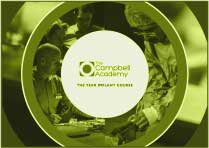
For those of you who were brought up in Catholicism as I was will no doubt be very familiar with the tale of doubting Thomas which is particularly pertinent to this time of year in the Catholic faith.
It is an episode in Catholic history which has been frequently depicted and is known generally as the incredulity of Thomas. The story basically being that Thomas was not present when Jesus arrived to meet the ten apostles after his death (Judas was dead) and he refused to believe unless he saw. The moral of the story was that when he saw he believed but Jesus said to him “blessed are those who believe without seeing” A situation I think which happens regularly now throughout the world where people refuse to believe something until they see it with their own eyes.
This is despite the fact that people are taught from experienced elders and betters but in their youth and in their exuberance feel that they might make a difference and make a change where others have failed (assuming that those others are lesser when in fact they’re actually greater)
Many phenomena will impact on this and a consumers society which rewards gain and material wealth over almost anything else would be somewhere where it would be necessary to ignore the teachings of others who have been before you and to collect as much and as quickly as possible.
So, as always what’s the point? Let me introduce you to one of my patients…
I won’t name her by name but I have full consent to present her case on a blog and also for teaching.
I first met this young lady when she was fifteen (ten years ago) when she fell off her bike. At that stage I was seven years into implant dentistry and pretty much knew everything!! We looked at the possibility of replacing her upper left central incisor with all options and she was consented for that (I worked in a different practice at that stage and the notes from all my patients there have been lost for some reason or another by the corporate who took it over)
In the end we decided to provide a Maryland bridge and review the situation over time to assess the bone volume but the bone volume deteriorated quite badly and we decided to place an implant with a GBR procedure at that stage.
Relatively soon after I left the practice and all my recall patients were lost. Although this patient did contact me we never saw her after 2008 until 2015. Since then she has been undergoing hygiene maintenance at that practice.
After the surgery was carried out when she was fifteen or sixteen years old she continued to grow, a phenomenon known as infraocclusion. At that stage I was aware of the potential and possibility of this, in fact it was discussed with the patient and he family, but I didn’t believe it, not really and ten years was a long time away to think about these things and what might be done.
Interestingly at a very similar time we treated another patient almost identically for an upper left central incisor again after she was hit in the face by a hockey puck at the same age.
In the past two years both of these patients have returned with the same problem requiring the same solution. It’s interesting now though because far from being an inconvenience, it is a real privilege to see them again and to be able to reassess.
In general terms with the case I am presenting today I am delighted with the result longevity and overall stability of everything we’ve done. In fact it appears to again reinforce our protocol for GBR in these cases as we provide it but obviously the crown is too short.
In this case we will replace the crown free of charge because it is a teaching case and we want to show it and tell people the story as we did with the other case. We now have two cases of infraocclusion in patients that we treated ten years ago which tell a tale to others in the hope that they won’t have to search to see before they can believe but will actually be able to see it and believe it.
Treating patients in their mid-teens who lose their upper front teeth is extremely complicated and the issues are enormous. The discussions with families and the patients themselves are long and arduous. I suppose we learned that the hard way so that now other people don’t have to.
Blog Post Number - 1251





Leave a comment